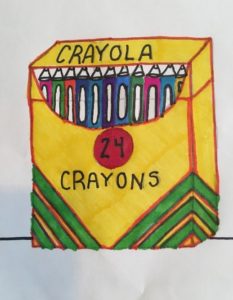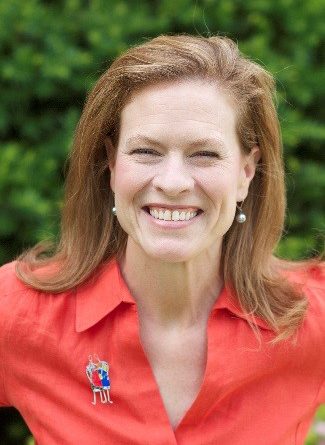Cutting-Edge Ministry in 2018–Volunteering to Read to Children and Teaching in the Public Schools by Elizabeth Hinson-Hasty
Our nation’s widespread disinvestment in public education over the last forty years demands an urgent response. The impact of poverty and the acceleration of the wealth divide are visible and palpable in the hallways of public schools all across our nation. Inequalities in income and wealth always translate into a lot of lacking. In the case of the public schools, this can mean a variety of things, including a lack of access to resources (paper, pens, books, computers, toilet paper, etc.) needed within the school, lack of family-sustaining pay for teachers who work extraordinarily long hours, often lack of family support for students at home due to unpredictable work schedules or insecure jobs held by parents, and, sometimes, lack of adequate staffing because teacher placements are dependent upon the number of students enrolled.
 For the last year and a half, I have served as an elected representative on the Site-Based Decision Making Council (SBDM) of my daughter’s school. Not only is the funding perilously slim, but the district is facing teacher shortages with no clear end in sight. People of color who live in poverty who attend schools with majority minority populations get the worst end of this deal, but much is at risk for this entire generation of students and our nation as a whole. Democratic institutions depend upon an educated citizenry that can critically discern their own thoughts about power, history, representation, and justice.
For the last year and a half, I have served as an elected representative on the Site-Based Decision Making Council (SBDM) of my daughter’s school. Not only is the funding perilously slim, but the district is facing teacher shortages with no clear end in sight. People of color who live in poverty who attend schools with majority minority populations get the worst end of this deal, but much is at risk for this entire generation of students and our nation as a whole. Democratic institutions depend upon an educated citizenry that can critically discern their own thoughts about power, history, representation, and justice.
You may have been aware of these trends for some time. The situation became more real to me when I was faced with trying to help solve teacher shortages as an elected representative on the SBDM at my daughter’s school. I learned that JCPS schools had 145 teacher vacancies across the district about a month into the fall term. Compounding the lack of adequate staffing, fewer people are choosing teaching as a career making it difficult to find teachers to fill the vacancies. My district, JCPS, doesn’t have the biggest problem with teacher vacancies. For example, there were nearly 1,300 teacher vacancies in Chicago at the beginning of the fall semester (about 6% of teaching jobs in that district). You can find the data about your state in this U.S. Department of Education document on the “Teacher Shortage Areas Nationwide Listing 1990-1991 through 2016-2017.”
School districts are responding to inequalities and teacher shortages in a variety of ways. For example, JCPS has embarked on new initiatives to increase the talent pool of educators, including designing pathways for veterans and career changers such as alternative licensing and creating a racial equity policy and plan.
Consider the facts that connect three major themes in this discussion–
Disinvestment in Education — Most schools are funded by non-federal sources, state and local tax dollars. About 92% of funding for public schools is from non-federal sources. About half of the nation’s states, spent less on education in 2016 than before the Great Recession beginning in 2008. According to the National Education Policy Center, public schools remain “nearly $19 billion short of the annual funding they received in 2008, after adjusting for changes in consumer price index.”
Poverty, Wealth Inequalities, and School Funding – Native Americans have the highest poverty rate in the U.S. at 26.2%; followed by Hispanic/Latinx at 22%, African Americans at 21.6%, and Asian Americans at 14.7%. Whites of Anglo European descent have the lowest poverty rate at 9.9%. For more information, see this summary of recent poverty statistics offered by Kairos. More than 50% of all children in the U.S. are poor or low income and will qualify for food stamps before the age of 20. That is the highest child poverty rate among other countries considered the most highly industrialized and technologically advanced nations (including Canada, the U.K., Ireland, Sweden and Norway).
Researchers Richard Wilkinson and Kate Pickett examined math and literacy scores among 15 year olds to consider the connection between poverty and wealth inequalities and educational attainment—countries with the highest levels of income and wealth inequality also have “worse educational attainment” (see Wilkinson and Pickett, The Spirit Level (Bloomsbury, 2010), 105). In addition, within the U.S., more unequal states have higher high school drop-out rates. Wilkinson and Pickett observe, “In three states, Mississippi, Louisiana and Kentucky, more than a quarter of children drop out of high school with no educational qualifications” (Wilkinson and Pickett, 108).
On average, school districts spend $11,000 per student each year. High poverty districts receive an average of $1,200 less per child. The U.S. district with the largest number of minority students receives $2,000 less per child. There is a direct correlation between high median family incomes, wealthy school districts, and educational attainment, five of the wealthiest are in New York, New Jersey, Connecticut, California and Massachusetts.
Racial Ethnic Disparities in Access to Good Quality Public Education – Researchers now conclude that schools in the U.S. today are more racially segregated than they were forty years ago. People identifying as African American, Asian American, and Hispanic/Latinx make up the majority in public schools. White student enrollment in public schools continues to decrease. Mimi Kirk’s article offers some critical reflections on “Why White Parents Won’t Integrate Public Schools.”
Education matters for the sake of our whole community, the commons. I think most religious leaders and people of faith will agree with me that access to a good quality education is a basic human right and central to Christian social teachings. Access to education is the heart of our Reformed heritage. No historian can fully verify whether Reformer John Calvin was ordained, but we do know with certainty that he devoted himself to educational institutions. Calvin thought of educational institutions as a means to glorify God and depended upon them to develop leadership for both church and society. For this reason, white Reformed Christians have a huge stake in education for social, theological, and historical reasons.
Let’s make a pact to work together to do something about our nation’s disinvestment in public education and the way it is impoverishing the bright young minds of our nation, preventing us from encountering neighbors across artificial but tangible lines of race and class, and limiting access to good quality education for people in poverty. I have some ideas for what we can do.
Research equity issues in your local school district and figure out where the wealth divide translates into gaps in learning and achievement. The principal at my daughter’s school intends to put in place a Racial Equity Committee to address these gaps. Michael Godsey’s article on “Inequality in Public Schools” from The Atlantic may stimulate your thinking.
Talk about the importance of paying taxes with your friends and in your congregation, particularly if your household has a combined annual income of more than $120,000. Taxes are essential to redistributing wealth and our public schools desperately need the support. In addition, if you get a refund after filing your state taxes this year, consider donating all or part of it to the neediest school in your area. This Op-Ed from The Brookings Institution offers some perspective on “Good Reasons for Taxes.”
Volunteer to read to or teach in a local public school. As a Presbyterian teaching elder, I am well aware that Presbyterians are a well-educated lot. Our denomination takes pride in educating “teaching elders,” “ruling elders,” and supporting colleges, universities and seminaries. Maybe we could consider these types of opportunities leading toward ordination, fulfilling field education placements, or serving as college internships. Youth groups could engage younger children as well. Today, I think filling this gap is ministry from the margins and on the cutting-edge.
What are your ideas and what are you doing in your school district to address our nation’s disinvestment in public education? Your stories matter for us all, mostly this generation of students.
About the author: Elizabeth’s most recent book The Problem of Wealth: A Christian Response to a Culture of Affluence (Orbis 2017) won the Catholic Press Association 2018 first place award for a book related to Catholic Social Teaching. She is a theology professor and serves as chair of the department of theology at Bellarmine University in Louisville, Kentucky. In addition to her scholarly work, Elizabeth and her husband, Lee, are the parents of two children educated in public schools. Their son is now a first year student at Case Western Reserve University and their daughter is in middle school. Elizabeth and Lee enjoy being recognized as proud parents of a Scottie’s Field Hockey player.


Pingback: Fighting for Our Children’s Future by Julie Taylor Monetta - Ecclesio.com